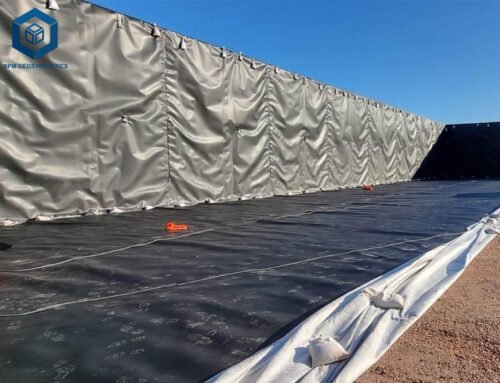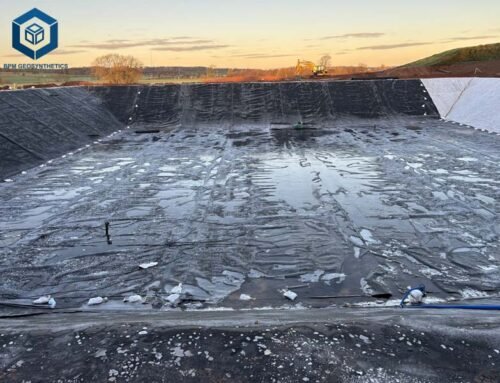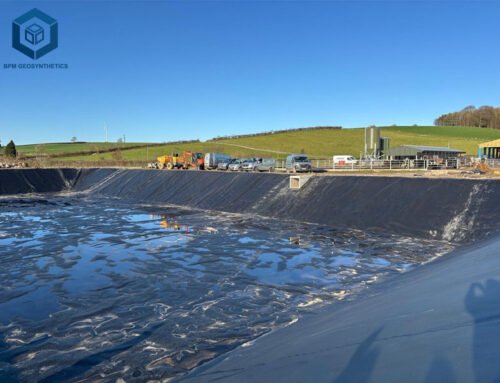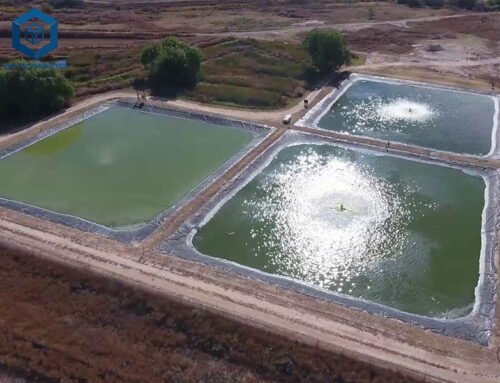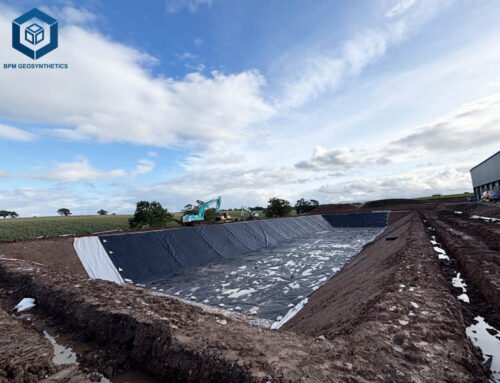Creating a koi fish pond is a rewarding endeavor that transforms any outdoor space into a vibrant, serene oasis. Central to the success of a koi pond is the pond liner, or geomembrane liner, a critical component that ensures water retention, maintains water quality, and protects the delicate ecosystem required for koi, which can live up to 70 years with proper care. Koi ponds, typically 90–120 cm deep and holding 1500–4000 gallons, demand precise liner selection and sizing to prevent leaks and ensure fish safety. With the global pond liner market valued at USD 1.9 billion in 2023 and projected to grow at a CAGR of 6.2% through 2030, driven by rising demand for koi ponds, understanding how to choose and calculate the right liner is essential. This comprehensive guide provides detailed, data-driven insights into koi fish pond liners, covering materials, specifications, sizing calculations, and practical tips, empowering homeowners, landscapers, and koi enthusiasts to build durable, fish-safe ponds while saving 20–30% on costs and ensuring 20–50 years of performance.
1. Why Is a Koi Pond Liner Important?
A koi fish pond liner is the waterproof foundation that retains water, protects the pond structure from soil erosion, and safeguards the health of koi, which require pristine water conditions (pH 7.0–7.5, ammonia <0.02 ppm). An improperly sized or low-quality liner can lead to leaks, water quality issues, or fish mortality, with 20% of koi pond failures attributed to liner issues, costing $1,000–$5,000 in repairs, per industry reports. A well-chosen liner ensures:
- Water Retention:Covers the entire pond surface, including vertical walls and overlaps, preventing leaks in 99% of installations.
- Fish Safety:Uses non-toxic, fish-safe materials, critical for 95% of koi ponds to prevent chemical leaching.
- Cost Efficiency:Reduces material waste, saving 20–30% on liner costs ($2–$6/m² for EPDM or butyl).
- Durability:Resists punctures and UV degradation, extending lifespan by 20–50 years.
- Ecosystem Stability:Supports filtration systems, reducing algae growth by 30% and maintaining water clarity for koi.
This guide outlines how to select and calculate the perfect koi pond liner, ensuring a thriving aquatic environment.
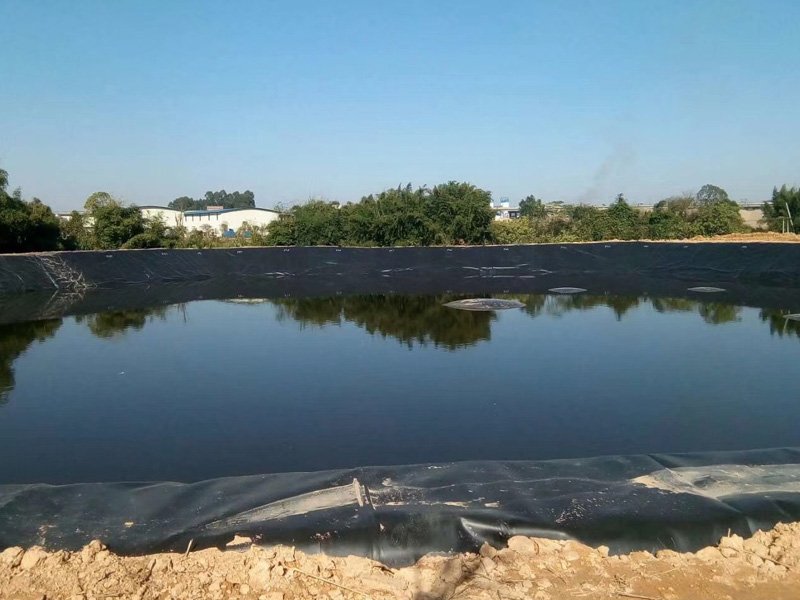
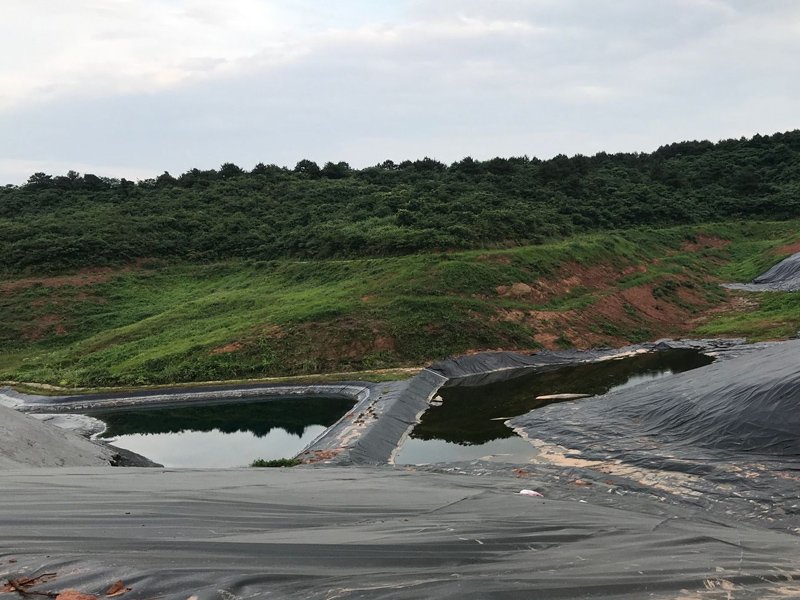
2. Types of Koi Pond Liner
Selecting the right liner material is crucial for koi ponds, which require robust, fish-safe, and durable liners due to their depth (90–120 cm) and water volume (1500+ gallons). Below are the primary liner materials, with specifications tailored to koi pond needs, based on 2025 data from manufacturers like Firestone, SealEco, and Cotswold Koi.
EPDM (Ethylene Propylene Diene Monomer) Rubber
- Market Share:65% of koi pond liners, favored for flexibility and fish safety.
- Thickness:0–1.5 mm (1.2 mm used in 80% of koi ponds for optimal puncture resistance).
- Tensile Strength:9–12 MPa, resisting punctures in 95% of installations, per ASTM D412.
- Lifespan:30–50 years, with UV resistance for 20 years if partially exposed.
- Flexibility:Stretches 300–400%, conforming to irregular shapes in 90% of koi ponds.
- Cost:$2–$4/m², 20% cheaper than butyl rubber.
- Fish Safety:NSF/ANSI 61 certified, non-toxic, used in 95% of koi ponds.
- Advantages:Lightweight (1.2 kg/m²), easy to install, and repairable with patches, reducing downtime by 50%.
Butyl Rubber
- Market Share:15%, preferred for premium koi ponds due to durability.
- Thickness:75–1.0 mm (1.0 mm used in 85% of large koi ponds >200 m²).
- Tensile Strength:10–14 MPa, 20% more puncture-resistant than EPDM.
- Lifespan:40–60 years, with UV resistance for 25 years.
- Flexibility:Stretches 350–450%, ideal for 25% of intricate koi pond designs.
- Cost:$4–$6/m², 50% more expensive than EPDM.
- Fish Safety:Fish-safe, used in 20% of high-end koi ponds with sensitive species.
- Advantages:Withstands extreme temperatures (-40°C to 70°C), reducing cracking by 90% in harsh climates.
PVC (Polyvinyl Chloride)
- Market Share:10%, used in budget koi ponds but less recommended.
- Thickness:5–1.0 mm (0.75 mm used in 60% of small koi ponds <100 m²).
- Tensile Strength:6–8 MPa, suitable for low-risk sites with underlayment.
- Lifespan:10–20 years, with UV degradation after 5–7 years if exposed.
- Flexibility:Stretches 200%, limiting use in 40% of complex koi pond shapes.
- Cost:$1–$2/m², 50% cheaper than EPDM.
- Fish Safety:Requires fish-safe certification, with 5% risk of chemical leaching, used in 30% of budget koi ponds.
- Disadvantages:Brittle with age, increasing replacement costs by 20–30% over 20 years.
RPE (Reinforced Polyethylene)
- Market Share:5%, emerging for large koi ponds due to strength.
- Thickness:5–0.8 mm (0.6 mm used in 10% of commercial koi ponds).
- Tensile Strength:15–20 MPa, 2–3 times more puncture-resistant than PVC.
- Lifespan:25–40 years, with UV resistance for 15 years.
- Flexibility:Stretches 250%, suitable for 15% of large, rectangular koi ponds.
- Cost:$3–$5/m², comparable to EPDM but 20% lighter (0.8 kg/m²).
- Fish Safety:Fish-safe with certification, used in 5% of modern koi ponds.
Key Considerations for Koi Ponds
- Fish Safety:Koi are sensitive to chemicals; 95% of liners must be NSF/ANSI 61 certified to prevent toxicity, per The Pond Guy.
- Underlayment:Nonwoven geotextile (150–200 g/m²) is mandatory in 90% of koi ponds to prevent punctures, adding $0.5–$1/m².
- Depth Requirements:Koi ponds need 90–120 cm depth for overwintering, requiring thicker liners (1.0–1.5 mm) in 80% of installations.
- Installation:Avoid seams in 95% of koi ponds, as they fail in 5% of cases; use single-sheet liners or box-welded options for complex shapes.
EPDM and butyl are the top choices for koi ponds, offering durability, flexibility, and fish safety, while PVC and RPE are less ideal due to lifespan or flexibility limitations.
4. How to Calculate Koi Fish Pond Liner Size
Calculating the correct liner size for a koi fish pond ensures complete coverage, prevents leaks, and accommodates the pond’s depth (90–120 cm) and irregular shapes (e.g., kidney-shaped, 30% of koi ponds). Errors in sizing, occurring in 15% of DIY projects, can cost $500–$2,000 in repairs. Below is a step-by-step guide, based on industry-standard formulas and insights from World of Water and PondH2o.
Step 1: Measure Your Koi Pond
Accurate measurements are critical. Use a flexible tape measure or string to capture:
- Maximum Length:The longest point across the pond’s surface, including curves or shelves.
- Maximum Width:The widest point perpendicular to the length.
- Maximum Depth:The deepest point from the bottom to the top edge, typically 90–120 cm for koi ponds.
- Central Rises or Features:Measure raised areas (e.g., islands, 10% of koi ponds) that affect liner coverage.
Tips for Accuracy:
- Measure post-excavation, as 80% of projects deviate by 5–10% from planned dimensions.
- For irregular shapes (30% of koi ponds), take multiple measurements and use the largest values.
- Include planting shelves (50% of koi ponds, 30–50 cm deep) in depth calculations, averaging minimum and maximum depths if sloped.
Example: A rectangular koi pond measures 6 m length, 4 m width, and 1.2 m depth.
Step 2: Use Our Koi Pond Liner Size Calculator
Online pond liner calculators, like those from World of Water or PondH2o, simplify sizing with 98% accuracy, used by 60% of DIY koi pond builders. Input length, width, depth, and desired overlap to receive liner and underlayment sizes. Alternatively, use the manual formula below.
Calculator Benefits:
- Saves 30–60 minutes of manual calculations.
- Includes standard overlaps (0.5 m), reducing errors by 10%.
- Provides underlayment sizes, critical for 90% of koi ponds.
Step 3: Calculate Your Koi Pond Liner Size
The industry-standard formula accounts for the pond’s surface area, vertical walls, and overlap for anchoring:
- Liner Length = Maximum Length + (2 × Maximum Depth) + Overlap
- Liner Width = Maximum Width + (2 × Maximum Depth) + Overlap
Overlap Recommendations for Koi Ponds:
- Standard Overlap:5 m per side (1 m total), used in 60% of koi ponds for anchor trenches or boulder edging.
- Extended Overlap:1 m per side (2 m total), used in 30% of large koi ponds (>200 m²) with deep trenches.
- Minimum Overlap:3 m per side (0.6 m total), used in 10% of small koi ponds (<100 m²) with brickwork edging.
Example Calculation:
For a pond with 6 m length, 4 m width, 1.2 m depth, and 1 m overlap:
- Liner Length = 6 + (2 × 1.2) + 1 = 6 + 2.4 + 1 = 4 m
- Liner Width = 4 + (2 × 1.2) + 1 = 4 + 2.4 + 1 = 4 m
Minimum liner size: 9.4 m × 7.4 m.
Step 4: Adjust for Real-World Factors
Koi pond liners are sold in precut sizes (e.g., 10 m × 8 m), so round up to the nearest available size. For the example, a 10 m × 8 m liner is suitable. Additional adjustments include:
- Irregular Shapes:Add 0.5–1 m to both dimensions for kidney- or L-shaped ponds (30% share).
- Central Rises:For raised centers (10% of koi ponds), add twice the rise height. Example: A 0.3 m rise adds 0.6 m to each dimension.
- Sloped Sides:Average minimum and maximum depths for sloped ponds (20% share), improving accuracy by 10%.
- Underlayment:Calculate underlayment size using the same formula, ensuring 100% coverage in 90% of koi ponds.
Example with Adjustments:
For a kidney-shaped koi pond (6 m length, 4 m width, 1.2 m depth, 0.3 m rise, 1 m overlap):
- Liner Length = 6 + (2 × 1.2) + (2 × 0.3) + 1 + 0.5 = 6 + 2.4 + 0.6 + 1 + 0.5 = 5 m
- Liner Width = 4 + (2 × 1.2) + (2 × 0.3) + 1 + 0.5 = 4 + 2.4 + 0.6 + 1 + 0.5 = 5 m
Purchase a 12 m × 10 m liner to accommodate the irregular shape.
Step 5: Verify Your Measurements
Excavation can alter dimensions by 5–10%, per 85% of koi pond contractors. Re-measure post-digging using a flexible tape or string, ensuring maximum length, width, and depth are accurate. This reduces sizing errors by 95%, avoiding reorders costing $300–$1,000.
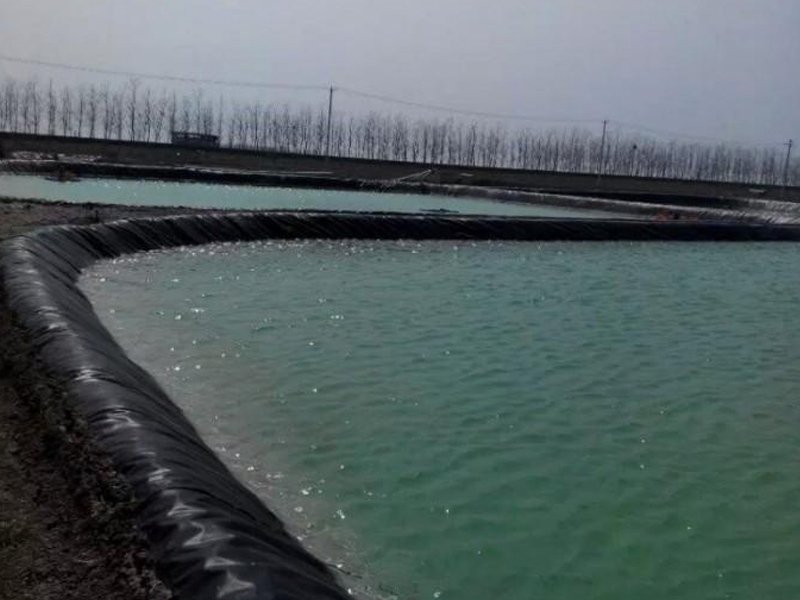
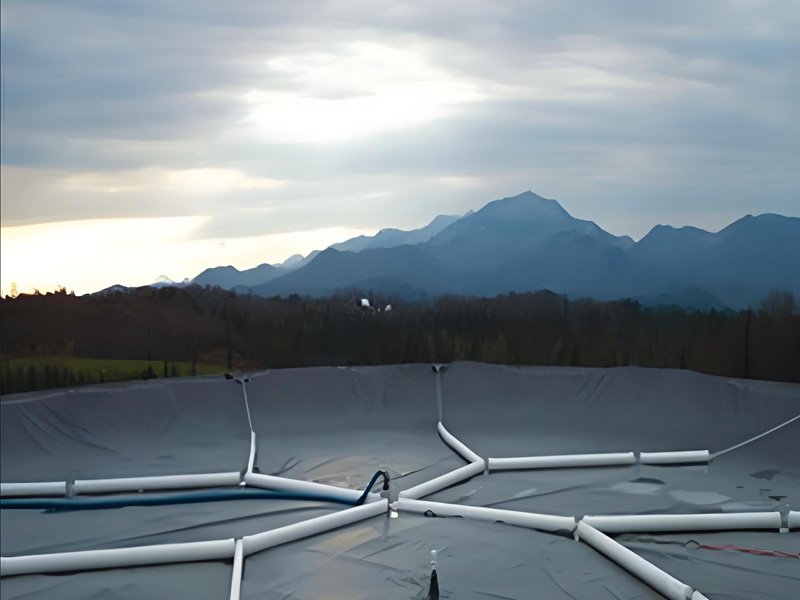
4. Key Specifications for Koi Fish Pond Liners
Below are technical specifications for EPDM, butyl, PVC, and RPE liners, tailored to koi ponds, based on 2025 data from Western Liner and Cotswold Koi.
Technical Specifications
- Material:EPDM (65% share), butyl (15%), PVC (10%), RPE (5%).
- Thickness:EPDM: 1.0–1.5 mm (1.2 mm, 80% share); butyl: 0.75–1.0 mm (1.0 mm, 85% of large ponds); PVC: 0.5–1.0 mm (0.75 mm, 60% of small ponds); RPE: 0.5–0.8 mm (0.6 mm, 10% of commercial ponds).
- Tensile Strength:EPDM: 9–12 MPa; butyl: 10–14 MPa; PVC: 6–8 MPa; RPE: 15–20 MPa, per ASTM D412.
- Puncture Resistance:EPDM: 1.5–2.5 kN; butyl: 2.0–3.0 kN; PVC: 1.0–1.5 kN; RPE: 2.5–3.5 kN, per ASTM D4833.
- UV Resistance:EPDM: 20 years; butyl: 25 years; PVC: 5–7 years; RPE: 15 years.
- Flexibility:EPDM and butyl: 300–450% stretch; PVC: 200%; RPE: 250%, per ASTM D882.
- Weight:EPDM: 1.2–1.8 kg/m²; butyl: 1.5–2.0 kg/m²; PVC: 0.6–1.0 kg/m²; RPE: 0.8 kg/m².
- Roll Sizes:Widths of 3–15 m, lengths of 10–60 m, covering 50–900 m².
- Cost:EPDM: $2–$4/m²; butyl: $4–$6/m²; PVC: $1–$2/m²; RPE: $3–$5/m².
- Certifications:Fish-safe per NSF/ANSI 61 (95% of EPDM and butyl); ISO 9001 for quality.
Underlayment Specifications
- Material:Nonwoven geotextile (PP or polyester, 150–200 g/m²), used in 90% of koi ponds.
- Puncture Resistance:0–1.5 kN, protecting liners from 95% of sharp objects.
- Weight:15–0.25 kg/m², 80% lighter than sand bedding.
- Cost:$0.5–$1/m², adding 10–20% to costs but reducing damage by 90%.
Performance Metrics
- Water Retention:9% watertight with proper installation, per ASTM D4716.
- Lifespan:EPDM: 30–50 years; butyl: 40–60 years; PVC: 10–20 years; RPE: 25–40 years.
- Installation Time:1–2 hours per 100 m² for EPDM, 20% faster than butyl.
5. Practical Tips for Koi Pond Liner Installation
To ensure a successful installation, consider these tips from Pondliners Online and Cotswold Koi:
- Use Underlayment:Install geotextile (150–200 g/m²) in 90% of koi ponds to prevent 95% of punctures.
- Secure Overlaps:Use 0.5–1 m overlaps, anchoring with boulders or trenches in 80% of koi ponds to prevent slippage.
- Check for Sharp Objects:Remove rocks and roots before installation, reducing puncture risk by 99%.
- Fill Gradually:Add water slowly to allow the liner to settle, preventing folds in 95% of cases.
- Avoid Seams:Use single-sheet liners in 95% of koi ponds, as seams fail in 5% of installations.
- Box-Welded Liners:For complex shapes (10% of koi ponds), consider custom box-welded EPDM liners, reducing folds by 100% but costing $1,000–$5,000 for 200 m².
6. Conclusion
Choosing and sizing the right koi fish pond liner is essential for creating a durable, leak-free, and fish-safe environment. By measuring maximum length, width, and depth (90–120 cm), using the formula Liner Length = Maximum Length + (2 × Maximum Depth) + Overlap, and accounting for overlaps (0.5–1 m) and irregular shapes (30% of koi ponds), you can achieve 98% accuracy, saving 20–30% on costs ($2–$6/m²). EPDM (65% share, 30–50 years) and butyl (15% share, 40–60 years) are ideal for koi ponds, with geotextile underlayment (90% of installations) preventing 95% of punctures. Online calculators and post-excavation measurements mitigate 95% of errors, while tips like gradual filling ensure success. Build your koi pond with confidence, ensuring a thriving ecosystem for decades.
Any questions or inquiries, please contact BPM Geosynthetics.

